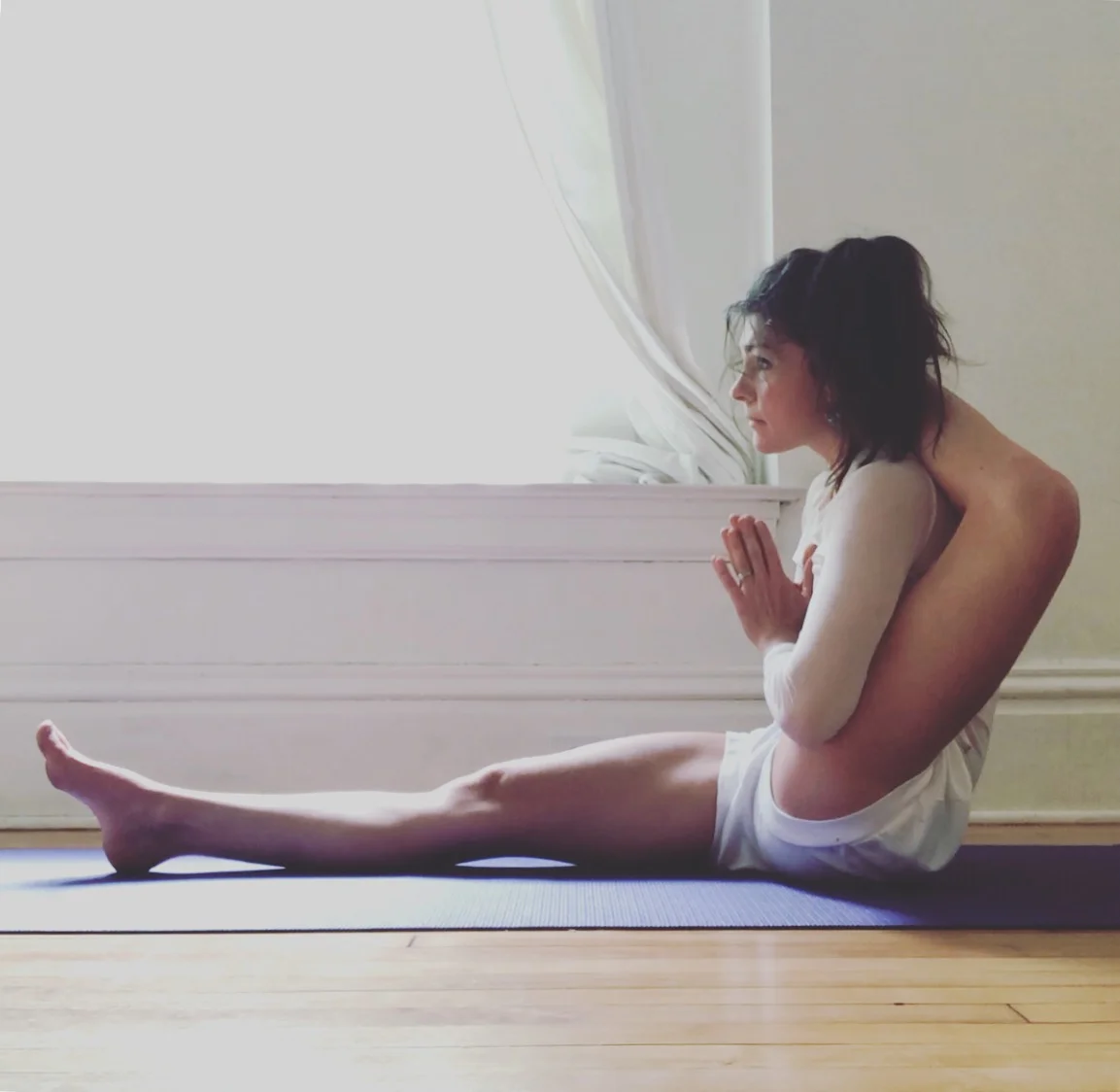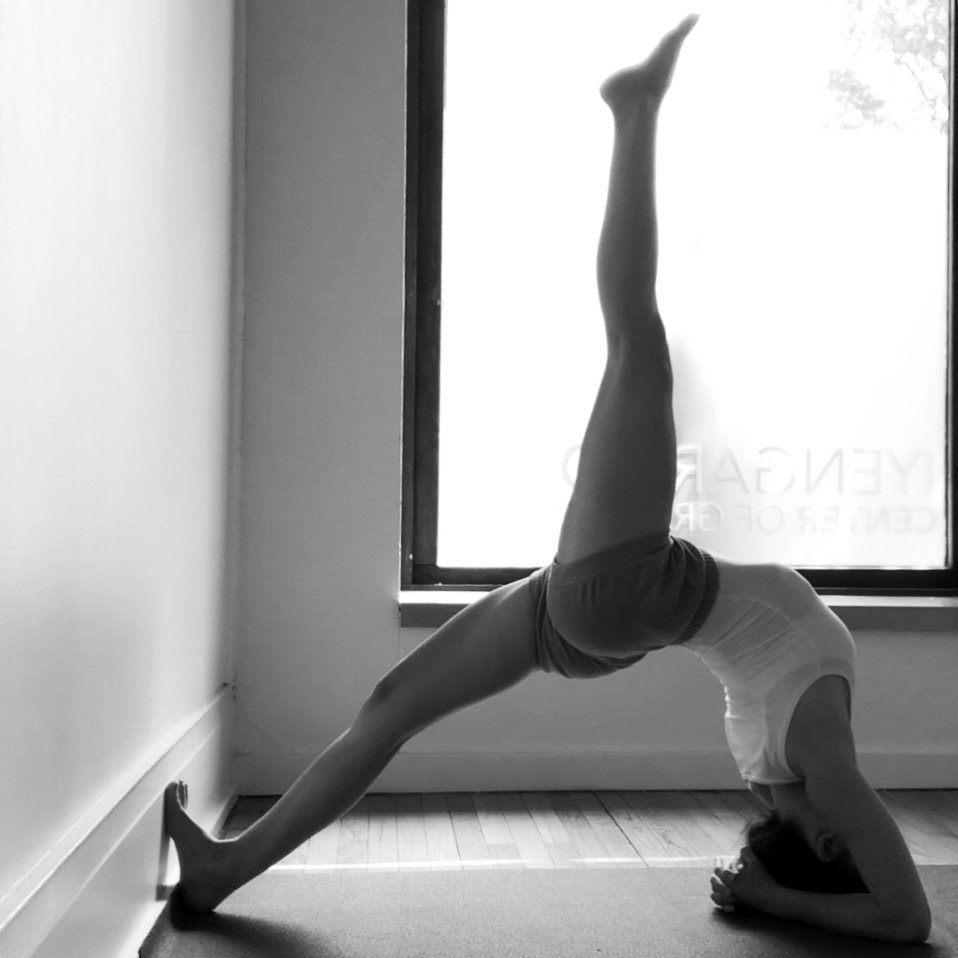“The meaning of yoga is to restrain oneself from all bonds of pain and sorrow. Hence, Yoga must be resolutely practiced with a determined mind. ”
Viparita Chakrāsana
“ Yoga has to be practiced without distress, anxiety or fear, so that one can reach the zenith in Yoga. ... According to Patañjali, yoga is a discipline... Consciousness is affected more often by emotional upheavals than by intellectual deficiencies. Yoga begins with the mind, as this is the part of citta (consciousness) that comes into contact with objects and creates the feelings. Yoga is a mental discipline for restraining the fluctuations of thoughts, so that consciousness (citta) is kept in an unoscillated, steady and stable state. It is a course of conduct for gaining a steady state of citta [consciousness]. Coordinating the intellect of the head with the intelligence of the heart archives integration between the two...This union of the head with the intelligence of the heart does take place through Yoga sadhana.”
✨
Practicing Viparita Chakrasana requires quieting anxieties of the mind/ego that may tend to dominate to let the experiential understanding within rise. On this day, I was practicing after the kids class. Children in a balanced state are able to act quickly and joyfully without dwelling on thoughts and worries. So first I taught the class but later was learning from seeing their way of being. In childhood I suffered from anxiety and poor health and I never learned handstands or backbends. The brain has to be adjusted and quiet for me to be able to perform this pose. Through Iyengar Yoga, it is possible to reverse the negative experiences of formative years and become free in body and mind.
“Once you have decided on a course of action that is good for you, you should not oscillate. A strong determination and discipline is necessary to succeed. If you waver, you will lose the track and disappointments are bound to arise.”
“Why should you practice yoga? To kindle the divine fire within yourself. Everyone has a spark of divinity in him which has to be fanned into flame.”










